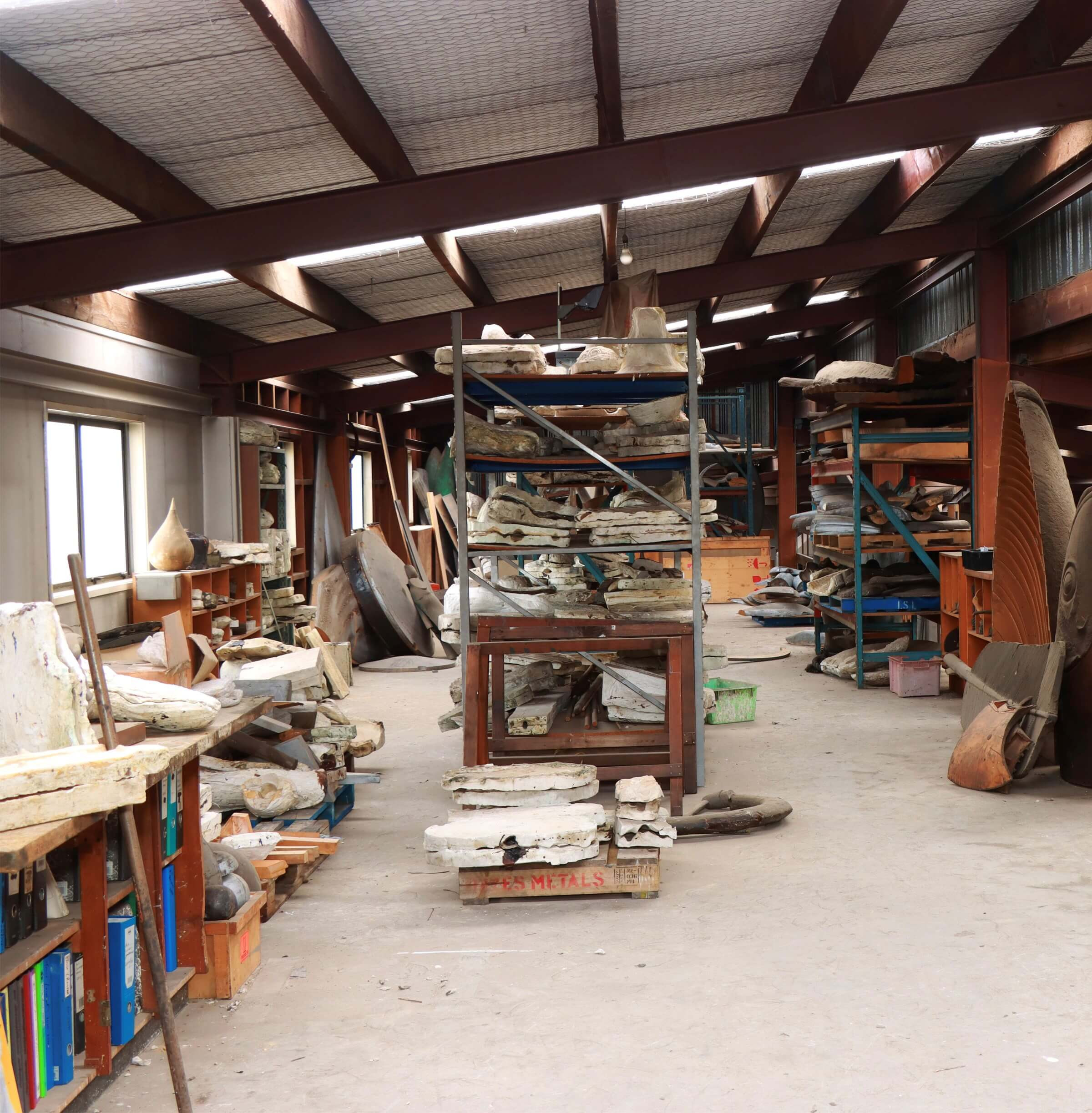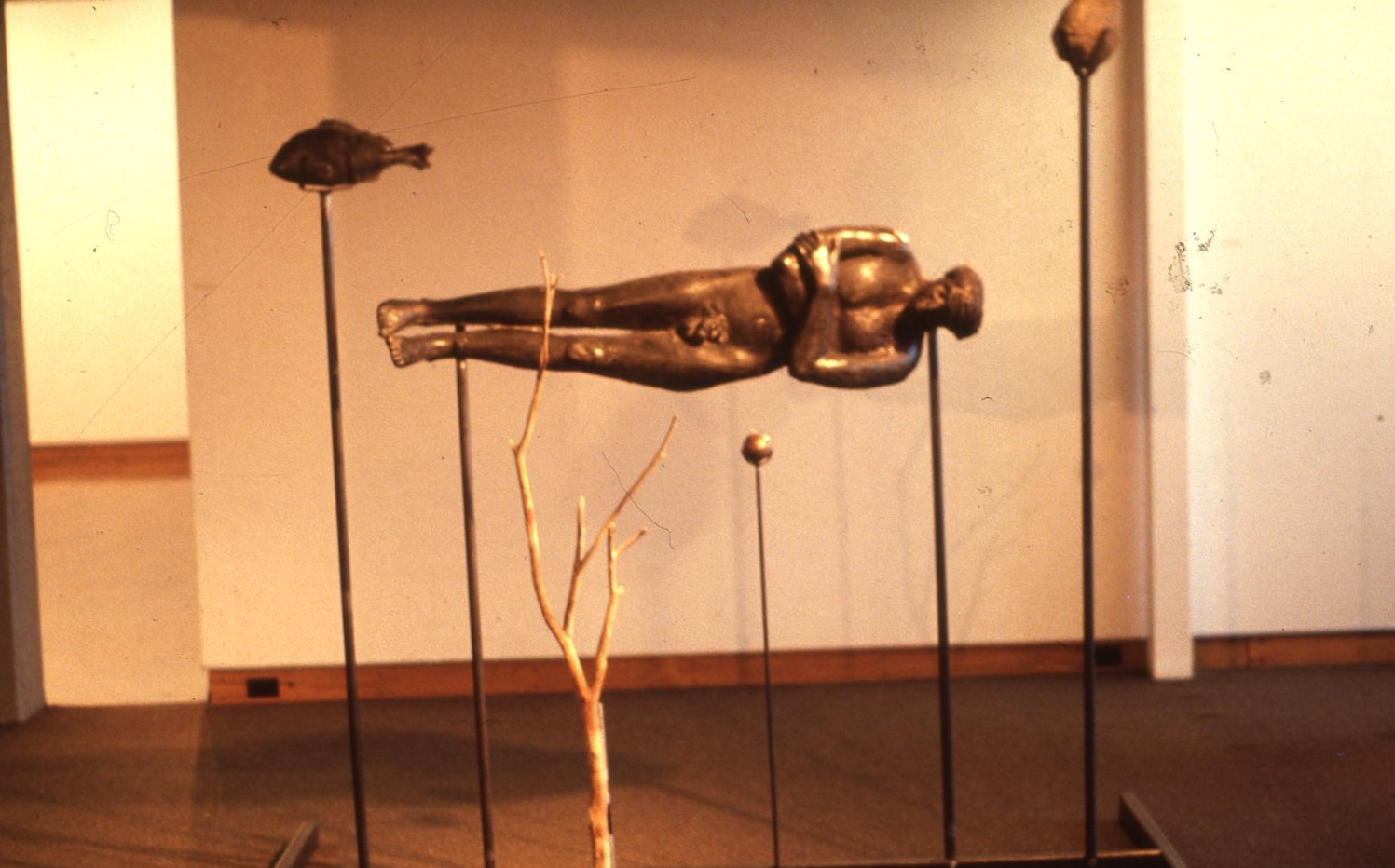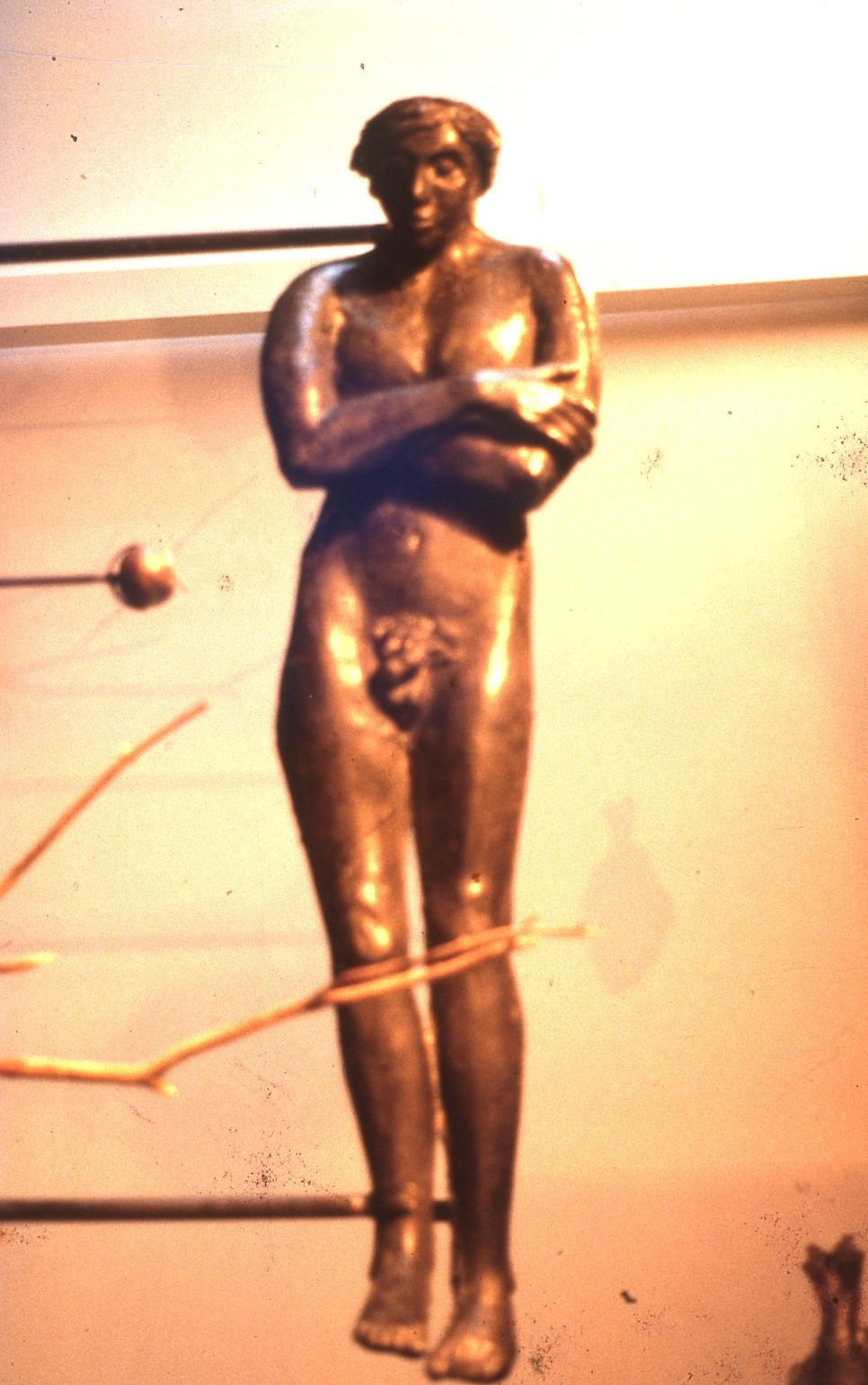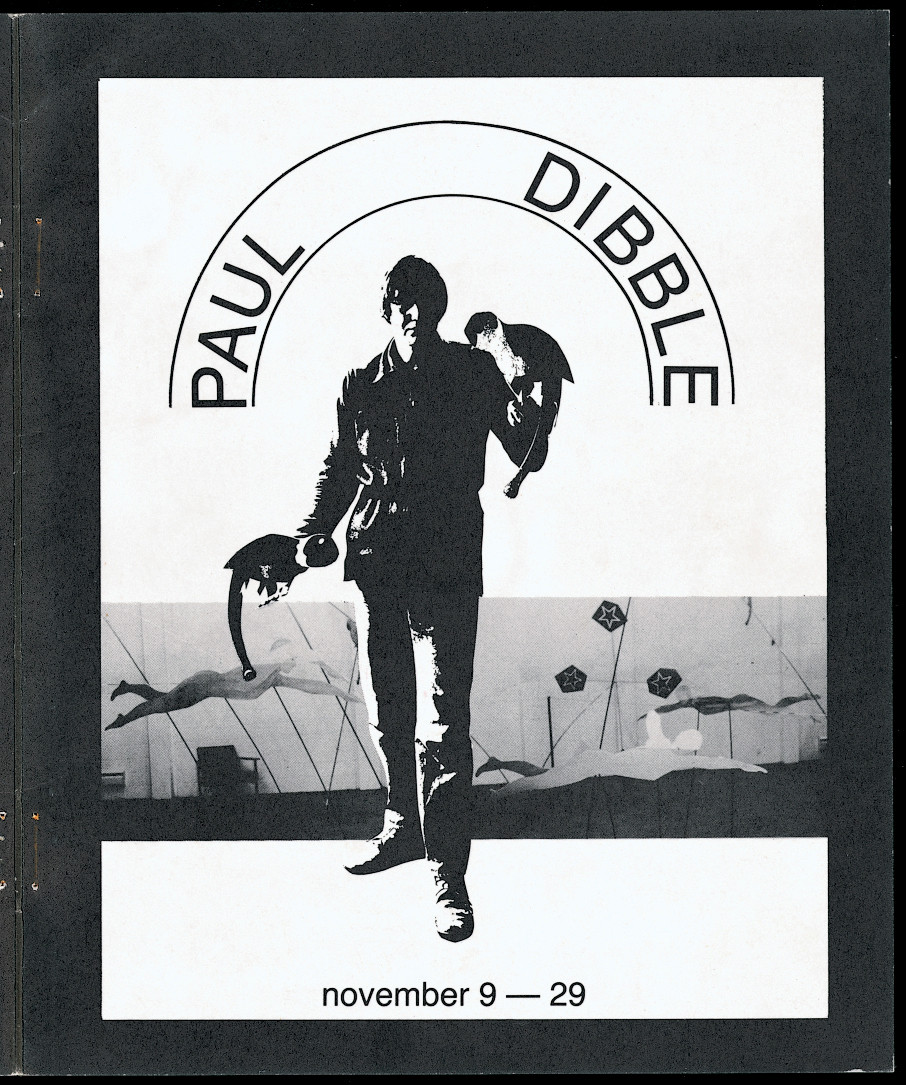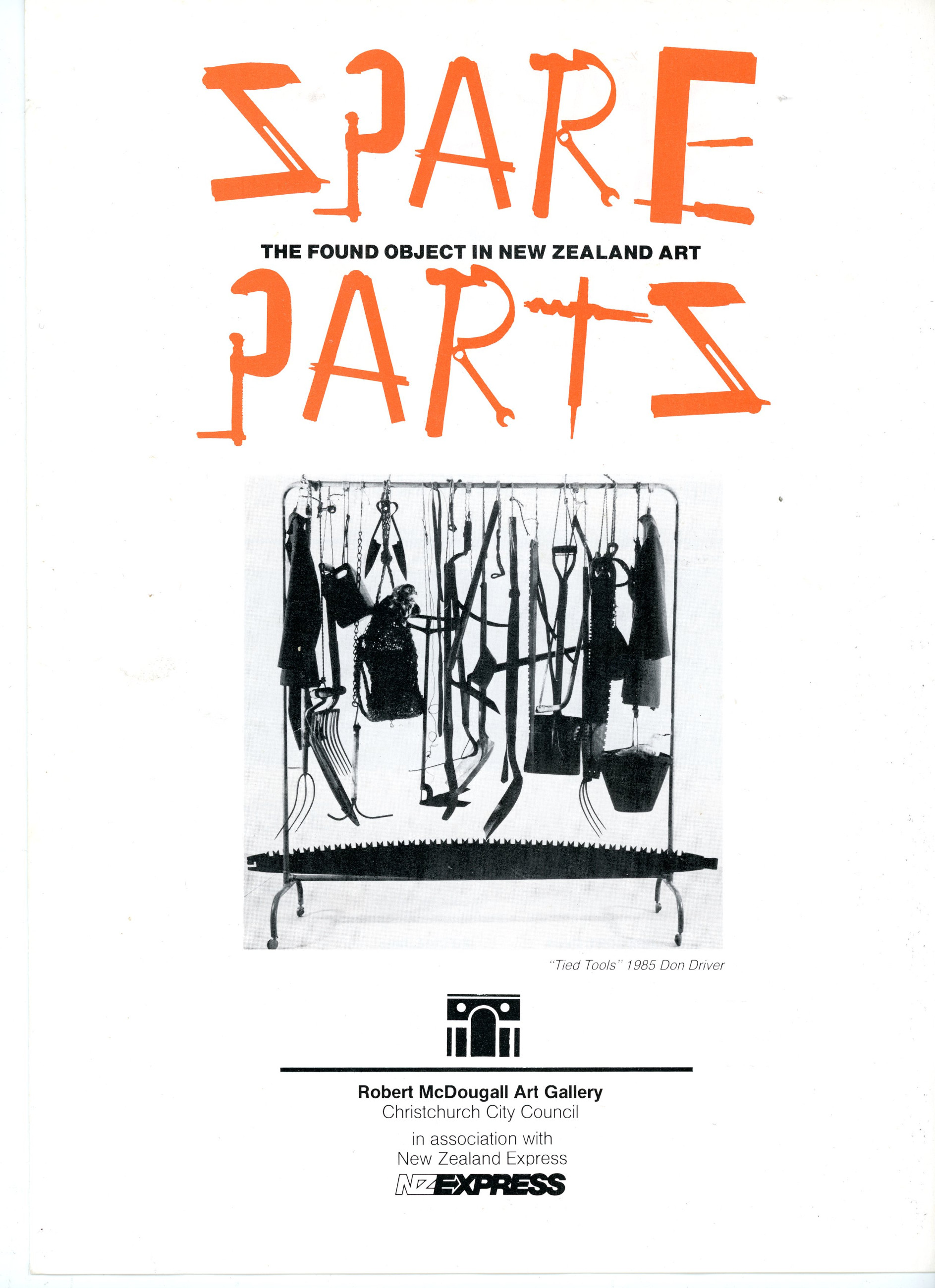1983 Earth Relics
1983 Earth RelicsVarious media
2100 x 2100 x 1200 mm
1983
Single edition
Notes
Media: cast bronze, wood, galvanized steel, fondeau cement.
Earth Relics sits in a peculiar place within Dibble’s sculptural oeuvre. It is a work that could be included in a whole variety of different genres, but in none is a complete fit (the fault of our attempts to categorize artworks you could argue). It was a part of an exhibition that was eclectic in content, you could sense the artist was drawn in several directions – a large parrot installation and then some smaller bronze model pieces as odd companions to Earth Relics, the move to durable artworks seemed on his mind after a decade of making works that were impossible to store.
The artwork, or the laying figure of the adolescent boy, which is the primary object within the assembled work, is made of fondue cement, a material the artist had used previously on some of his large church crucifixes. The sculpture’s meaning is somewhat ambivalent. The boy looks as if he is a characterisation of a Roman or Greek myth, a fable in some creation tale. His length makes up the horizon of the ocean, a boat resting to the side, a fish held under the imaginary surface line while a rock is held above, and an orange featured as strange offering. A framework of steel supports these items, with an unexpected gentle quality, almost cradling each item in separate curved supports. An oar, real sized, as ‘found’ object, is propped into the composition. And a row of feathers is applied across the boy’s shoulders.
Are all these additions an intention to tell a story? A tale of life and death and youth, a comment on land and sea and the peoples that live between. Or are these aesthetic and intuitive additions, nothing more than a play with themes and textures, intentionally oblique?
This lone work very nearly existed as a pair. Fran, Dibble’s wife was the model for his female study in the same vein, which sat in a similar pose. It was a closer fit to a mature Gaia figure than pubescence, with the artist modelling a more rounded woman. He made the plaster mould from the modelled clay work but then decided to pour it in wax, with the hopes that he could find someone to cast it, although technical expertise in the country at the time was severely limited. So, the mould was hung from a backyard tree, with a plug system in the bottom which could be pulled out when the figure was full of the hot liquid and drained.
This enterprise, inevitably and dramatically, went wrong and somewhat agitated at the inadequacy of the technical support the project was abandoned. This was circa 1985 or 86. Rudimentary attempts were made to reuse the mould and it was reverted to using concrete as the media, but Dibble was never happy with the results. He resolved his technical quandary with a sidestep by adopting metal sheet and its possibilities with cutting and folding. A return to modelled figurative work was taken up later when the studio had the methods and means to do it, nearly ten years forward.
The question remains of where the archivist places this artwork within the practice. It is an assemblage, irreverently put it is bits and bobs added together, this assemblage working seen in a host of works throughout the 1990s. The use of the scaffold can be seen in several pieces from the late 80s. And further afield, with props and stalks holding and strengthening. Perhaps it is an experimental piece, and it lands there. Or is this an earlier pre-runner for the tableaux works that would dominate the early 2000 years?
